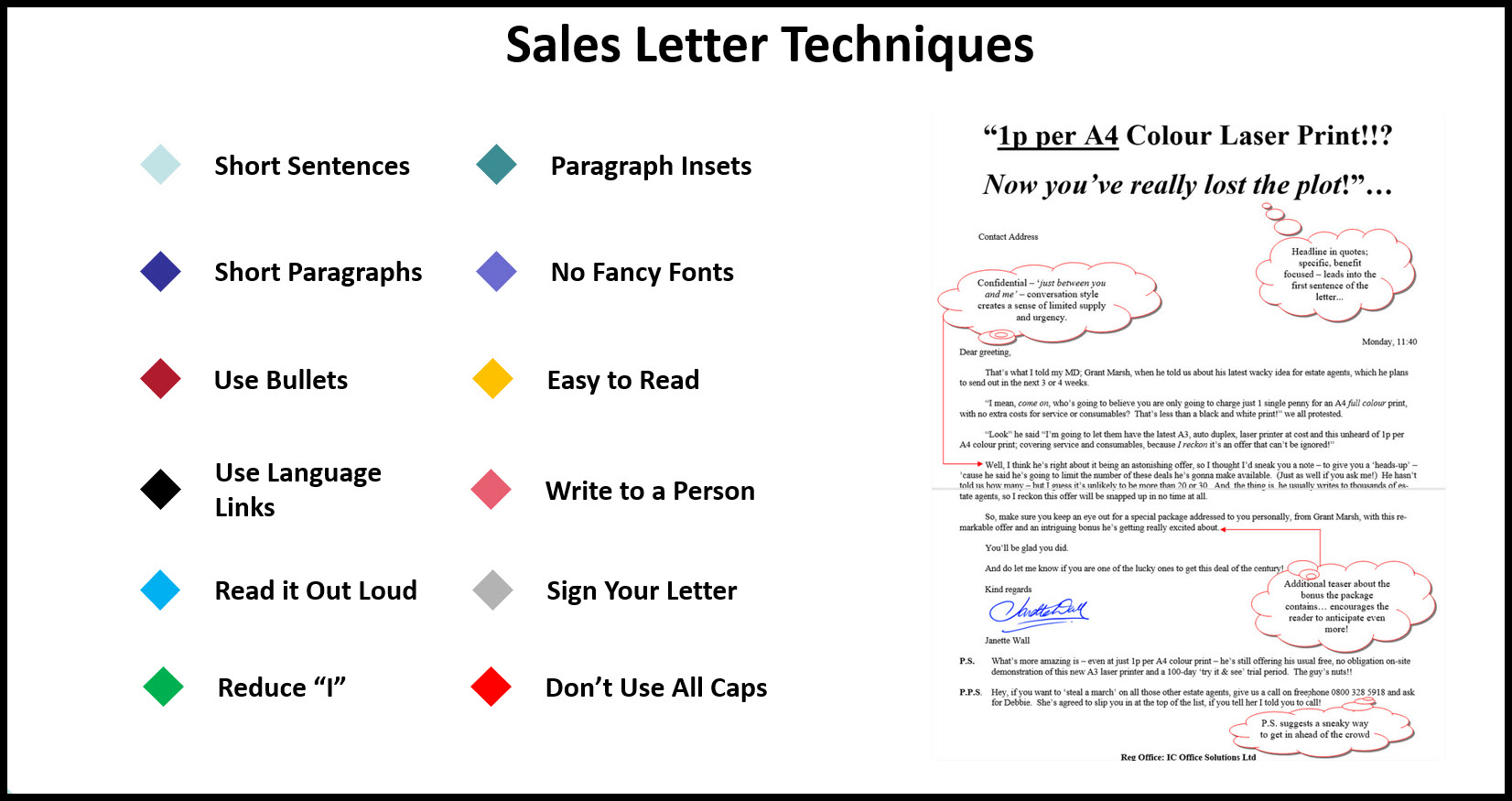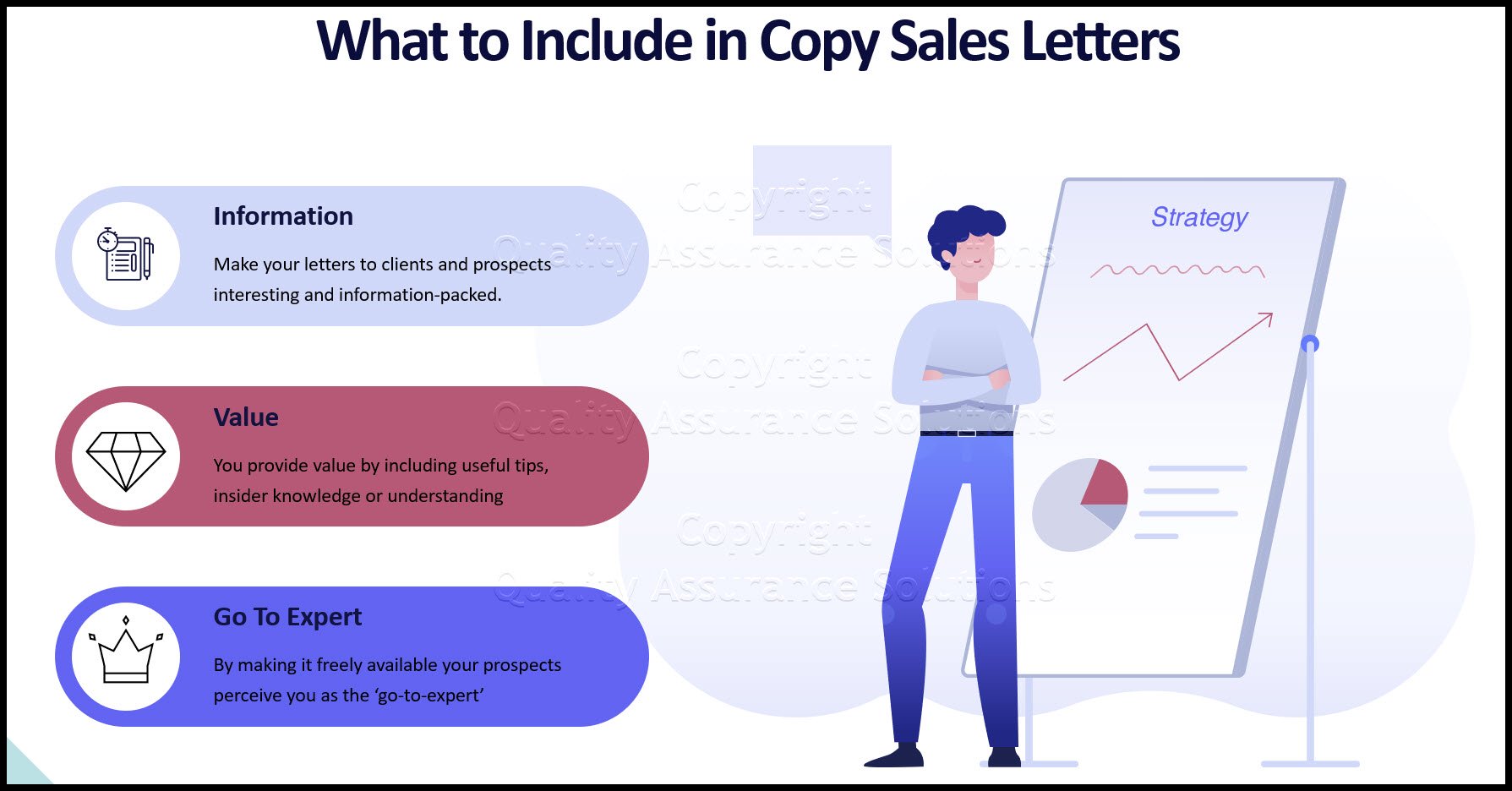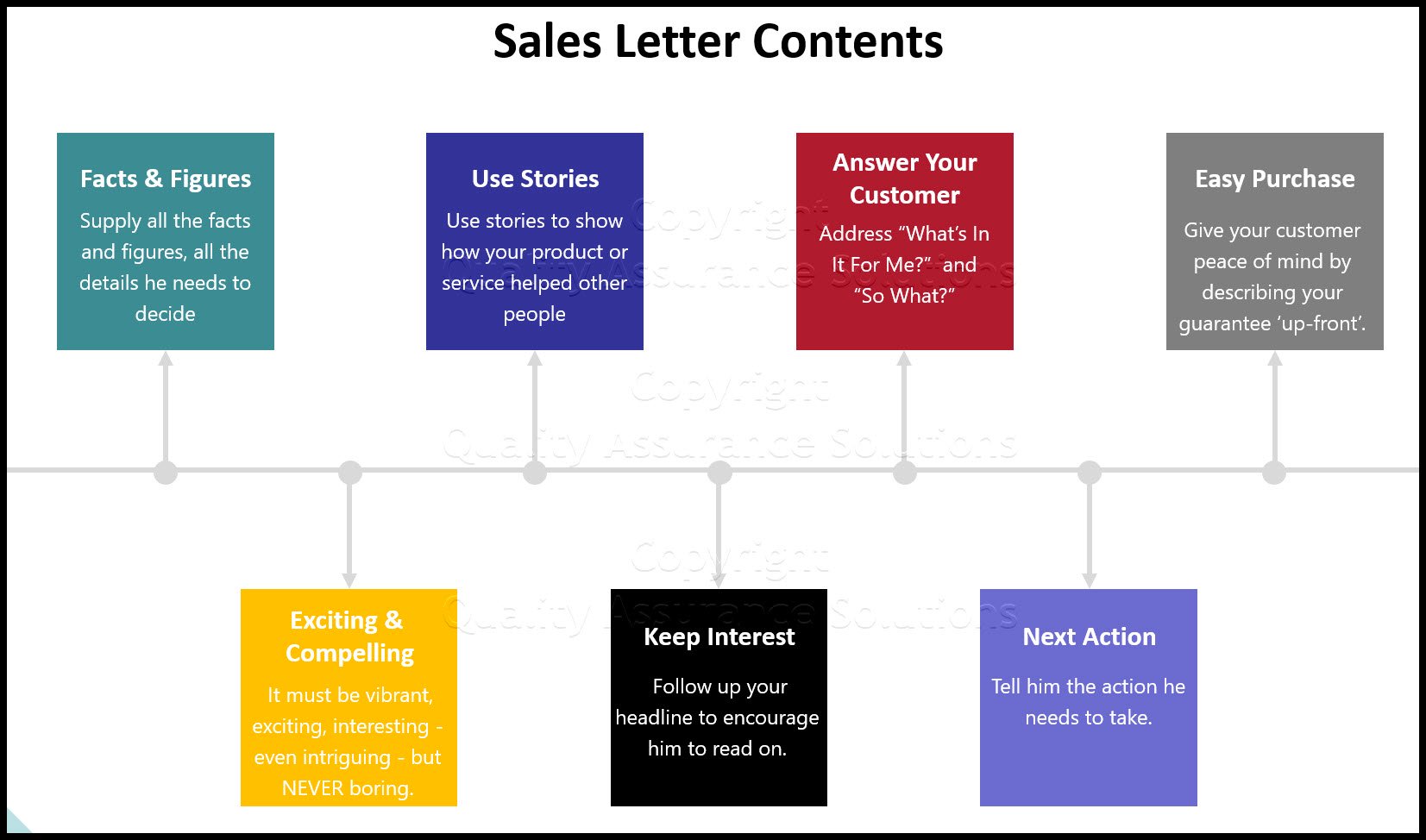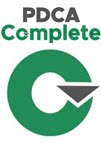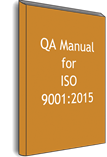How To Write A Sales Letter
How to write a sales letter. Discover 20 techniques to get your sales letter read and responded to.
Longer letters, describing all the benefits of an offer, have been proven to be more effective in getting responses and, more importantly, sales.
But a number of pages with closely printed type is very discouraging for anyone to tackle. The layout and structure of your letter can invite your prospect to read – or stop them in their tracks.
TrainingKeeper Software. Keep, organize and plan all your employees' training and activities. Software includes multi-user support with reports, certs, and calendars.
How To Write A Sales Letter - 20 Techniques
1. Keep your sentences short. For how to write a sales letter, use simple words that are easy to understand. Unless you are writing to people who speak the same technical language as you do, don’t use jargon. Think about how you would describe your offer if you were talking to your best friend. This is the language to use in your letter.
2. Inset the first line of your paragraphs. Although this is not the ‘modern’ style for letters, it is actually better for your reader. Tabbed paragraphs make your page more aesthetically appealing and less daunting to read.
3. Use short paragraphs – 6 lines or less. Long paragraphs give a ‘solid’ appearance, which do not encourage your reader to tackle it. It is perceived as hard work and creates a barrier for your prospect. Aim to cover just one point in each paragraph.
4. Don’t finish a sentence or paragraph at the end of a page. For how to write a sales letter, you want your reader to continue onto the next page…a split sentence or hyphenated word entices them to turn over so they can finish the word or sentence. People rarely want to stop mid-sentence!
5. Plain is best for how to write a sales letter. Don’t go overboard with fancy fonts or colors. If you are writing a letter to a friend or business colleague it’s unlikely you would add colors and different fonts to your message. This is no different. You are writing a letter to your prospect or customer. Adding too much color and large, fancy fonts throughout your letter screams ‘sales brochure’ at the reader.
8D Manager Software with 8D, 9D, 5Y and 4M report generator. Your corrective action software for managing, measuring, and reporting issues.
6. Use bullet points and indented paragraphs to make your points stand out. Don’t be tempted to use fancy symbols for your bullets; just a simple · will give the best effect.
7. The same applies to numbered lists, use straight forward numbering.
8.
Make your letter as easy to read and attractive as possible. Use serif fonts for the main body text of
your letter. See below discussion.
9. For how to write a sales letter, link your paragraphs so your letter ‘flows’. These links are known as transitional phrases. They help the reader to make the ‘transition from paragraph to paragraph’.
Use links such as...
- The thing is…
- But that s not all…
- Now - here is the most important part
- And in addition…
- Better yet…
- You will see for yourself why…
- Take advantage of this opportunity to…
- Now - for a limited time only
- Interestingly enough…
- To help you do this…
- What you do next…
- But first…
- The Result?
10. Write your letter to a specific person. Have a picture in your mind of your ideal prospect or reader.
Start your letter with the person s name; “Dear John” or “Dear Mrs Allen”.
When you've finished your letter, go through and replace the name of the person you've written to with someone else s. Does the letter still work? If not, scratch it and start again.
11. Next, go through your letter and replace your company name, product or service with your competitors. Is the letter describing your competition perfectly? If so – you haven t got a good working sales letter.
Your letter must have something that is unique or different; otherwise, your prospect has no reason to buy from you rather than your competitor.
This Data Analysis Video teaches you the basic tools for understanding, summarizing, and making future predictions with your collected data. Includes MS Excel templates.
12. How does your letter read? In The Greatest Direct Mail Sales Letters of All Time , Richard S Hudgson suggests the hat test :
“Put on your hat and go out of your office and find someone who doesn t know your product or service. Ask him or her to read your letter aloud. Listen to the way he or she reads it and any questions they ask. You ll soon discover if you've got it right. If he or she does ask questions - you need to add more information!”
13. Always, always, always sign your letter with a hand-written reflex-blue signature. For how to write a sales letter, never use a computer generated handwriting font and do not get someone to p.p. your letters.
Both of these give the recipient the impression he or she is not important enough for you to take the trouble.
Why reflex-blue? Reflex blue is the closest printed blue to the Royal Blue ink used in fountain pens. Tests have proven a blue signature does raise the response quite dramatically.
14. Never put a full-stop at the end of your headline – it stops your reader and they may not continue on to your letter.
15. Never use ALL CAPS in your headline – it’s very difficult to read ALL CAPS – especially if your headline is long. You want your reader’s eyes to slip smoothly across your headline and down into your letter.
16. Position your headline so it is the first thing they see at the top of the page – especially if folded to fit a DL envelope. Your company letterhead or logo does not encourage readership, especially if the person you are writing to does not know you or your company.
17. Check what shows through the window part of the envelope when your letter is inserted. Is any part of the large, bold text of your headline showing through? If so it could prevent the envelope being opened – your recipient assumes ‘junk mail’ and bins it.
18. Use opaque envelopes. If the heavy print of your headline shows through the envelope it could suppress opening.
19. Use no more than three fonts in your letter; 1 for the headline; big and 'blocky', 1 for the main body of your letter with a slightly larger, bold version for your subheads and one for any quotes / testimonials you are including in your letter
Your ISO 9001:2015 Kit includes Templates, QA Manual, Implementation Guide and a Gap Assessment Internal Audit Tool for ISO 9001:2015
20. The ‘I’s' have it – but they shouldn't.
People are not interested in you, your company or your product. They are only interested in the result and benefit they get when they buy from you. Here's how to keep their interest…
The absolute, paramount, crucial point you MUST remember on how to write a sales letter, adverts, brochures, web pages or newsletters is to write from your reader's point of view.
"What's in it for me?" is the number-one question you should be answering for your prospect.
One of the easiest and simplest ways to check if your letter is focused on you, or your reader, is to count the number of ‘I's in your letter. Count I's, We, Us, Our. These are all focused on you, your company and your service or product. Then count how often the words ‘You' and ‘Yours' appear throughout your letter. If these are very low in number compared to the others – that's bad news.
Your prospect's going to be completely turned off – and there's a pretty good chance your letter won't even be read.
We're used to talking about our products or services; our company; our delivery reputation; our quality control. Apart from concentrating on the wrong person (the writer instead of the reader) this also concentrates on the features you're offering, not the benefits – it doesn't explain what the reader can expect to gain.
For how to write a sales letter, it's a difficult style to develop in your letters if you are not used to it. Persevere – it's worth it. You'll start to get amazing results when you do.
Write your letter as normal, then go through and edit it, remove all those I's and turn the message around so your reader is the center of attention.
Any message about your product can be turned around and written from your prospect's point of view, for example:
"Our unique weight-loss program is designed to reduce your weight by at least 10lbs each month"
could be written as…
"In your first month on this unique weight-loss program you lose at least 10lbs – and continue losing until you reach your ideal weight"
For how to write a sales letter, check the count – make sure the I's do not have the majority.
Employee Handbook Kit includes two Employee Handbook templates for Professional & Manufacturing. Includes over 60 policies and benefits templates.
Serif vs Sans Serif Font
There are serif fonts and sans serif fonts. Serif fonts are those with a slight tail at the bottom of each letter. The ‘tail’ draws the eye to the next letter or word and creates a flow so there is less strain on the eye. It makes reading much easier.
Example serif fonts are:
Times New Roman
Courier (Old typewriter style)
Georgia
Sans serif fonts do not have the little tail. They are a harsher font and can, almost, stop the reader in his tracks. They are sometimes used in headlines or sub-headlines when you want to catch the reader’s eye. They can be used to pull the reader into the letter when they are glancing through the pages.
Be careful though, you could have the opposite effect if your prospect is already reading through your entire letter.
Example san serif fonts are:
Arial
Impact
Trebuchet
- QAS Home
- Copywriting
- How to Write a Sales Letter
|
Quality Assurance Solutions Robert Broughton (805) 419-3344 USA |
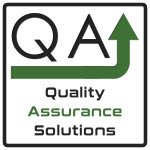 |
|
Software, Videos, Manuals, On-Line Certifications | ||
|
An Organizational Task Management System. Projects, Meetings, Audits & more | ||
|
Corrective Action Software | ||
|
Plan and Track Training | ||
|
AQL Inspection Software |
|
450+ Editable Slides with support links | ||
|
Learn and Train TRIZ | ||
|
Editable Template | ||
|
Templates, Guides, QA Manual, Audit Checklists | ||
|
EMS Manual, Procedures, Forms, Examples, Audits, Videos | ||
|
On-Line Accredited Certifications Six Sigma, Risk Management, SCRUM | ||
|
Software, Videos, Manuals, On-Line Certifications |
